 William J. Grove (1854-1937) William J. Grove (1854-1937) It was about 25 years ago when I stumbled upon a certain yellowed publication within the boundless stacks of the Wonder Book & Video Store. It was the History of Carrollton Manor written by William Jarboe Grove in 1922. I had a tough time figuring out what it was in rough shape and devoid of a cover, held together by just a few rusty staples. As I flipped through the nearly 300 pages, I instantly became mesmerized by this history of southern Frederick County, as told by a lifelong resident. William J. Grove wrote this book while in his late sixties, colorfully recounting stories related to his childhood memories of events and neighbors on the manor. Included were stories relating to farming, industry and the Civil War. The Grove family were quite prominent during the late 19th century, as William’s father, Manassas Grove was a successful industrialist. The elder Grove was responsible for the quaint hamlet of Lime Kiln, aptly named after the booming lime production operation he created. Son William would carry on management after his father’s death, and stayed quite active in Frederick affairs and politics. Sufficed to say, I bought this tattered book and was excited to start exploring a part of the county I hadn’t known much about. It still remains my personal favorite Frederick history book. One of the “Carrollton Manor characters” introduced to readers is Clara McAbee—proclaimed as “Maryland’s prettiest girl.” The short passage on her by Mr. Grove reads as follows: May 17, 1915, Lime Kiln loomed up through the United States when Miss Clara May McAbee was selected as the prettiest girl in Maryland, and was given a trip to California where she entered the nationwide beauty contest, and there came out second after a close contest. In a letter written May 18th, 1915, by William J. Grove to the Baltimore News, he says: “The beauty contest put the little village of Lime Kiln, Frederick County, on the map, nestled as it is on historic ground, Carrolton Manor, once owned by Charles Carroll of Carrollton, the signer of the Declaration of Independence. Why should not this beautiful girl win out, surrounded by the beauties of this old historic manor and softened by southern breezes from the Potomac?” S.C. Malone, the leading fine art engraver of America says of Miss McAbee, “I am frank to admit as an artist of international reputation that she is indeed beautiful in every sense of the word. It seems as if Mother Nature has enveloped her in all the patriotic panorama that has made the natural scenery of Frederick County famous.”  Former residence of Clara McAbee Leon located at 326 Lindbergh Avenue, Frederick, MD Former residence of Clara McAbee Leon located at 326 Lindbergh Avenue, Frederick, MD About five years after buying this book, I found myself pecking around an antique store in Emmitsburg, busily looking for local history collectibles. I soon came upon some World-War II era ration books from Frederick. I did a double-take when I read the name of the owner of these items—Clara McAbee Leon. It took me a minute to conjure up Clara McAbee, “the prettiest girl” I had read about back in Mr. Grove’s book years before. Examining these documents, I discovered Clara’s married name of Leon, and a residential address of 326 Lindbergh Avenue, located in the College/Baker Park area northwest of Downtown Frederick. She was in her late forties at this time. Twenty more years go by, and I now find myself in the employ of Mount Olivet Cemetery, writing weekly blog posts on interesting inhabitants of the cemetery. A few months ago, I consulted The History of Carrollton Manor while helping a cemetery patron conducting family research. The first page I opened up to was page 46, the one about Clara McAbee which jogged my memory. I simply looked in our burial database and found that Clara McAbee Leon is buried here at Mount Olivet in Area GG, Lot 29! So that is the magical inspiration behind my quest for attempting to learn more about “Maryland’s prettiest girl.” Unfortunately, I must confess, I didn’t find a great deal as Clara would not have any children of her own. She served as a step-mother to her husband’s son from an earlier marriage—but as you will soon see, that must have been a complicated relationship at best. 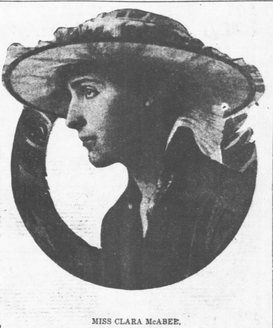 “Maryland’s Prettiest Girl” Clara Mae McAbee (Leon) was born October 3rd, 1894 in the vicinity of Lime Kiln, a small village that sits adjacent the original route 15 south, today known as Maryland route 85/Buckeystown Pike. The once booming industrial complex can be found just south of English Muffin Way, and roughly one mile north of Buckeystown. Clara was the daughter of Joseph F. McAbee and Eliza C. Funk, the second of eight children. The McAbees operated a general store out of the front of their Lime Kiln household, located north of Lime Kiln where the old B&O railroad intersected the Buckeystown Pike. In 1915, twenty-year old Clara was chosen by a local newspaper to participate in a competition to pick Maryland’s most beautiful young lady. It’s interesting to point out that this was one of the first “beauty pageants” of this kind, held six years before the first “Miss America” pageant was held in Atlantic City in 1921. The Maryland event occurred May 16th in Baltimore, and was hosted by the Sun Newspaper Company. Clara Mae was chosen the winner from a large field of 500 contestants, half of which hailed from Charm City. This was quite an accomplishment from a small-town girl, and that’s even a stretch to give Lime Kiln credit for being a small town. 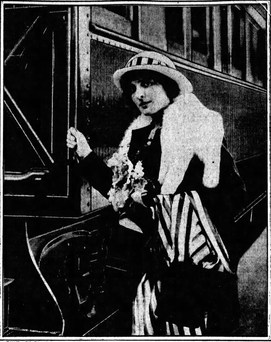 Newspapers near and far tried to describe the young lady in words. One such offered the following: “a black–haired beauty, with oval features, and Latinish mold of expression.” S. C. Malone went to work on behalf of his home state. He joined with the Frederick News in fundraising efforts to send young Miss McAbee to Los Angeles, California where a nationwide pageant was slated for mid-June. This competition was being sponsored by the Universal Film Company, known today as Universal Studios. For the motion picture pioneer, the event presented a great opportunity to gauge “visual talent” from across the land—the winner promised to receive a high-salaried film contract. Of course, visual appearance was “paramount,” (over straight-up acting ability) in this era of silent movies. Instant stardom was on the line for attractive young ladies representing nearly all the states in the country. When she departed Frederick on June 3rd, Clara’s reputation had preceded her to California, as she was listed among the favorites to win. As for the trans-Atlantic trek, the young Frederick Countian went first to New York City to meet with fellow Eastern contestants. From there, train travel took Clara and other contestants to Chicago to rendezvous with Midwest state champions. The caravan departed thence to the west coast.  Universal City, Los Angeles County, California (c. 1915) Universal City, Los Angeles County, California (c. 1915) The contest was maintained to be decided by merit, as the bulk of the judges were artists. Many of the competition categories were held at Universal City during the second week of June, 1915. All the while, the girls were treated to lavish dinners, shopping trips and excursions to nearby California sites and cities. The winner was announced June 12th after a lavish parade of the beauties. Washington DC’s Ruth Purcell won with a score of “93.45% perfect.” Clara McAbee was the runner-up with a score of “93% perfect.” Rounding out the top six were young ladies representing New Jersey, New Hampshire, Minnesota and Nebraska. As a consolation, the Frederick belle was also offered a motion picture contract. The top girls chosen next embarked on a goodwill tour across the country. Along the way, Clara began receiving marriage proposals. This was reported in Moving Pictures Magazine at the time. One matrimony offer came from a mine owner living in Las Vegas, another from a rancher whom she met at the Grand Canyon. On the subject, Clara playfully told a reporter: “I have been receiving letters from every city at which we have stopped and telegrams are also coming in from them. I’ll have to marry one of them to get rid of both.” Once back in Maryland, Clara was treated as a celebrity. She drew crowds, whenever, and wherever, she appeared in public. She was invited to many parties and dances throughout the region. In fact, the beauty queen was given a year pass of free movies from the Empire Theater in Frederick. The owners knew it would be good for business. Unfortunately, not much more is documented about Clara’s foray into the film industry. But what is known is that brown-haired beauty would play a starring role in a local drama to be played out in area courts and papers less than three years later. These events would feature all the love, scandal, and intrigue usually found in a Hollywood box office smash hit.  Washington Herald (1/27/1913) Washington Herald (1/27/1913) This was his second such offense.A trip to the Dentist Not usually pegged for a role in movies, our story’s leading man was a dentist by profession. His name, Dr. Albert K. Leon, a blonde-haired, blue-eyed native of Philadelphia, born in 1890. The son of Russian immigrants, Leon and his siblings had relocated to Washington DC. Dr. Leon’s father was a tailor and successful inventor who imparted on his children the importance of good dental hygiene. Like Albert, the bulk of his siblings (including an older sister) took up the dental profession. Albert was the youngest son and a bit of a rebel. Whether willingly of not, he completed dental school at Georgetown in 1911 and set out to start his career. That’s about the time he met Agnes V. St. John, a stylish young lady of the District of Columbia. Young Albert was “playing with fire” with Miss St. John. She was a devout Catholic, a “no—no” for a boy of Jewish faith for the times, not to mention his parents being even more strict to tradition as first generation immigrants. Whatever the case, Albert would bring embarrassment to the family in more ways than just a religious faux pa. In January of 1912, he was caught practicing dentistry without the necessary license needed in the nation’s capital. He did this while using the Washington, DC office of his older brother (Benjamin). Just a few month’s later, he eloped with girlfriend Agnes after telling his family he would be taking in a movie in Baltimore. The bi-religious couple were married on Easter Eve by Monsignor C. F. Thomas. This wedding would be kept secret by the couple for eight months, at which time the duo learned that Agnes was pregnant. The news shared with family was not well received well by either set of parents.  Baltimore Sun (12/2/1913) Baltimore Sun (12/2/1913) Albert’s family simply cut the cord on their youngest son, perhaps indirectly instigating his next big misstep by year’s end. Albert opened a dental office in Baltimore on West Lexington Street in October. In the early morning hours of December 2nd, Dr. Leon was caught in the basement of a candy store located below his office. He was arrested and charged with burglary, made even more sensational through newspaper coverage and the irony of a dentist caught robbing a confectionary. He claimed that he was simply investigating a noise, however the access for Dr. Leon required the help of a ladder placed within a dumb waiter chamber between floors. Albert Leon successfully sidestepped a candy store conviction to encounter two new life changes in 1914. First and foremost, Agnes gave birth to a baby boy in late August. He was named Albert K. for his father. Three months later (November of 1914), Dr. Leon announced in the Frederick newspaper that he had opened a dental office at 10-12 N. Market Street. He continued to boast locations in Baltimore and Washington, but Frederick would become his base of operations. Whether by design or not, Albert convinced Agnes that it was in the family’s best interest to have him firmly establish his practice in Frederick. This would require him to live in Frederick, while leaving his wife and son in DC with her parents. He claimed this would give him the time necessary to build a proper home for his wife and child. Leon’s innovative advertisements began appearing in the Frederick papers almost immediately. Interestingly, these included a self-photograph, something that strikes one as odd, especially done by a dentist. Perhaps there was an ulterior motive?  Former location of Dr. Leon's Dental Parlor at 10 & 12 N. Market Street, Frederick, MD (today the site of the Curious Iguana Book Store and Voila Tea Shop ) Former location of Dr. Leon's Dental Parlor at 10 & 12 N. Market Street, Frederick, MD (today the site of the Curious Iguana Book Store and Voila Tea Shop ) Dr. Leon seems to have been progressing well in Frederick by the size and scope of his advertising throughout 1915, the same year Clara McAbee was competing in pageants. Albert continued staying in Frederick during the week, and likely went home to Agnes and Albert Jr. in Washington on weekends. However, the long weeks could certainly open the doors of temptation—especially for a guy with a track record of proven sly behavior, getting caught with his hand in the candy jar, both literally and figuratively. However, this was nothing compared to what was to come. Somewhere along the line, Albert Leon became smitten with a young, vivacious patient named Louise M. Claybaugh, an employee of the Union Knitting Mills. Plenty of dental-themed double entendres could be used here, but I will refrain. Let’s just say that Louise received more than “a routine cleaning” from the good doctor. Claybaugh claimed later that Dr. Leon had misrepresented himself, claiming to have been unmarried. She made this discovery when Agnes and Albert, Jr. came to live in Frederick sometime in 1917. Claybaugh was enraged and threatened to bring suit against Albert. He calmed her with hush money, offering to pay her a weekly stipend for her silence and cooperation. She relented.  Reports claim that Frederick residents had marveled at the stylish, big-city fashions worn by Agnes when visiting her husband at his workplace. However, not to be outdone, a jilted Louise began copying the fashions of Mrs. Agnes Leon, obtaining and modeling many of the same outfits. The competition was on, however Louise would find out that she had more than one rival for Dr. Leon’s heart. Well, as if a love triangle wasn’t enough of a challenge for Albert Leon, the cunning periodontist decided to up the ante. Somehow, “Maryland’s prettiest girl,” Clara McAbee, would wind up in his dental chair. With his lack of self-restraint and love of teeth, it seems unfair that he could pass up the “prettiest” smile he would ever lay eyes on. One thing led to another and now he was successfully cheating on his mistress with the lovely girl from Lime Kiln. However, it was him who was about to go into the “kiln” as the jealous Miss Claybaugh was tracking his movements. She caught Dr. Leon and Miss McAbee in a compromising position in his office on October 12th, 1917. Claybaugh attacked Clara in a fit of rage. Claybaugh admitted that if it hadn’t been for the intercession of Dr. Leon, she would have inflicted serious bodily harm on “the prettiest girl.” After stewing a bit on what to do, Louise Claybaugh wrote an apology letter to Albert for her actions—then decided to make an unholy alliance with Agnes Leon. She confronted Albert’s wife on the subject. Oh to be a fly on the wall for that conversation. Louise divulged her role with the doctor, and then brought up his recent episode with “prettiest girl in Maryland.”  Agnes was devastated and on Christmas Eve, packed up her stuff and Albert, Jr. to head to her parent’s house in Washington, threatening to never return. A few days later, Albert apparently received a draft notice in the mail (as this was the height of World War I). Dr. Leon was no dummy, and persuaded Agnes and the draft board that his wife and son were dependent on him. It worked, and Agnes gave the seemingly repentant dentist another chance. She and Albert Jr. returned to Frederick. Everything was going as swimmingly as possible until late April 1918—that’s when “the toothpaste hit the fan,” so to speak. The Frederick and Baltimore papers were afire with the scandal of a “love quadrangle.” Agnes had issued a bill of complaint with the court outlining the altercation between misses Claybaugh and McAbee the previous October, and a titillating new wrinkle from March, 1918. On March 16th, Dr. Leon and Miss McAbee had “registered as husband and wife and remained at a hotel in Rockville all night occupying the same room.” Mrs. Leon had hired noted attorney Leo Weinberg and sued for court costs, that of her counsel and demanded a $100/month alimony payment starting immediately. This was duly granted by Judge Hammond Urner. She openly shared her story, and frustration (with her three-timing husband) with the newspapers. Once again, Clara McAbee found herself on the front page, but for the “unprettiest” of reasons.  The Leon family as they appeared living together in Frederick, Maryland for the 1920 US census. The Leon family as they appeared living together in Frederick, Maryland for the 1920 US census. Dr. Leon gave his side of the story a week later, not admitting or denying his guilt. He said it was simply a big misunderstanding. He pledged to Agnes that he would sever all ties with Claybaugh and McAbee. And somehow, it worked, the couple once again reconciled. It must have been divine intervention, but of a more technical kind. I’m thinking it was Agnes’ dedication to Catholicism and the sacrament of reconciliation, compounded with the church’s firm standing on divorce. Louise Claybaugh gave up the ghost and actually received positive attention for her role played in the affair. She also received marital offers E. Roy Kaufmann of Washington DC. The couple married just a few months later on September 11th, 1918. Forgiveness is a great virtue and Agnes Leon should be given all the credit in the world. But, alas it wouldn’t last. The Leon family of three persevered for a time, as they can be found living together in Frederick in the 1920 census, on South Market Street. Meanwhile, Clara Mae McAbee can be found still living at home in Lime Kiln within the same census. However, Agnes would find that she could not keep her husband and Clara apart. 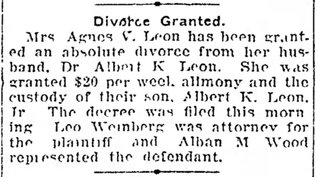 In 1923, Agnes Leon and 9 year-old son Albert, Jr. left Frederick once and for all. She sued for divorce, stating that her husband could not keep his pledge of fidelity to her. The guilty accessory to Dr. Leon’s downfall was not announced at first, but soon would be revealed as Miss McAbee. In April, Agnes was granted an absolute divorce. She had returned to Washington and would live with her parents, raising young Arthur, Jr. as a single mother. She would never remarry, dying in 1969. Son Arthur K. Leon, Jr. followed in his father’s professional footsteps, becoming a successful dentist, last serving in Boca Raton, FL. I guess you could say that “Maryland’s prettiest girl,” was once again victorious, beating other beautiful contestants! Clara Mae McAbee had won Dr. Leon’s heart, and would marry him in the mid 1920’s. The couple resided at 326 Lindbergh Avenue, but would have no children together. Dr. Albert K. Leon continued his successful dental practice in Frederick for over 50 years. He was noted in his field, serving as president of the Frederick County Dental Society and presented with a life membership in the Maryland state Dental Association. He also busied himself with charitable and civic work. The couple remained together, without known issue, until Albert’s death in April, 1966 at the age of 74. Dr. Leon’s passing made front page news in the Frederick paper, but this time he was duly heralded for his many contributions to the Frederick Community over his lifetime.  As for Clara, I know she did her part during World War II in respect to rationing, but outside of that, but I failed to learn much more. She died on March 20th, 1983, nearly 65 years to the day of her infamous night spent with Dr. Leon in a Rockville hotel. Clara was 86 years old. Her obituary appeared in the Frederick News a few days following her death. It mentions her late husband, described as Albert K. Leon, prominent Frederick dentist. A bevy of nieces and nephews are mentioned but nothing else. No mention of her one-time title as “Maryland’s prettiest girl.” No mention of the honor of runner-up for Universal Film Company’s national beauty competition in 1915, or potential film foray. Sadly the obit just tells readers that there would be no visitation hours at the funeral home, and graveside services would be private. She was laid to rest beside Albert on March 24, 1983 in Mount Olivet’s Area GG, lot 229.  I was surprised to find that Louise Claybaugh (Kaufman) is also buried in the cemetery, about 150 yards away in Area S. She died in 1949 at the age of 52. Louise Claybaugh Kaufmann would live in Washington most of her adult life after marrying E. Roy Kaufmann. Upon her death in October, 1949, her body was returned to Frederick and buried in a lot next to her parents (Area S/Lot 10). Corinthians 13:4-8 reads “Love is patient, love is kind. It does not envy, it does not boast, it is not proud. It does not dishonor others, it is not self-seeking, it is not.” I don’t know how to exactly apply this bible passage to this sordid story, as it may be more fitting to take inspiration from song titles such as “Love is a many splendored thing,” “Love is strange,” and best of all “Love is a Battlefield.” In this case, pain and heartbreak was unfortunately experienced, but Dr. Albert K. Leon and Clara Mae McAbee were destined to be together. Their love for each other took hold in 1917 and would withstand the test of time. It just goes to show that true Valentines belong together. However, I would strongly advise that love is a great deal sweeter if you can spare the pain and embarrassment to ex-lovers, family friends and self—and 4 out of 5 dentists should be able to tell you the same. Special thanks to Paula Feldman of the University of South Carolina. Ms. Feldman is a literary historian, English professor and great niece of Dr. Albert K. Leon, Sr.
If you have anything to share, especially photographs or reminisces of Clara McAbee, Dr. Leon et al, please leave comment or contact the author. Thank you!
6 Comments
Chris Garver
2/13/2017 06:45:44 am
Very interesting! Growing up in Adamstown, many kids got on our bus in Lime Kiln. I find the local history fascinating. Please keep writing about folks of our area, and Mt. Olivet too.
Reply
Martine Gue
2/13/2017 09:17:17 pm
Thank you so much for posting this article. I thoroughly enjoyed it. It was very interesting.! I look forward to reading more of your stories.
Reply
Denman Schmid
2/17/2017 11:23:54 am
Very enjoyable. Thanks for the post.
Reply
Jocelyn Wetzel
2/11/2018 12:05:44 pm
Very interesting article. Keep them coming.
Reply
Laura Garver
2/11/2018 08:23:03 pm
WWI not WWII
Reply
Karey
1/25/2020 02:49:37 pm
What a crazy situation. Funny part is all 3 women don't look all that different. This is the best part of doing geneological research. The stories! I love your site
Reply
Leave a Reply. |
STORIES
|
Archives
July 2024
June 2024
May 2024
April 2024
March 2024
February 2024
January 2024
December 2023
November 2023
September 2023
August 2023
July 2023
June 2023
May 2023
April 2023
March 2023
February 2023
January 2023
December 2022
November 2022
October 2022
September 2022
August 2022
July 2022
June 2022
May 2022
April 2022
March 2022
February 2022
January 2022
December 2021
November 2021
October 2021
September 2021
August 2021
July 2021
June 2021
May 2021
April 2021
March 2021
February 2021
January 2021
December 2020
November 2020
October 2020
September 2020
August 2020
July 2020
June 2020
May 2020
April 2020
March 2020
February 2020
January 2020
December 2019
November 2019
October 2019
September 2019
August 2019
July 2019
June 2019
May 2019
April 2019
March 2019
February 2019
January 2019
December 2018
November 2018
October 2018
September 2018
August 2018
July 2018
June 2018
May 2018
April 2018
March 2018
February 2018
January 2018
December 2017
November 2017
October 2017
September 2017
August 2017
July 2017
June 2017
May 2017
April 2017
March 2017
February 2017
January 2017
December 2016
November 2016

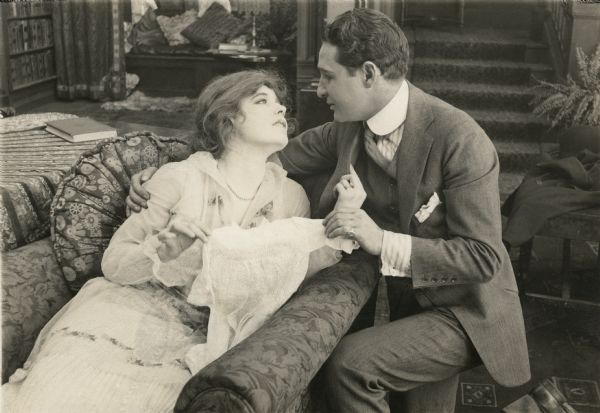

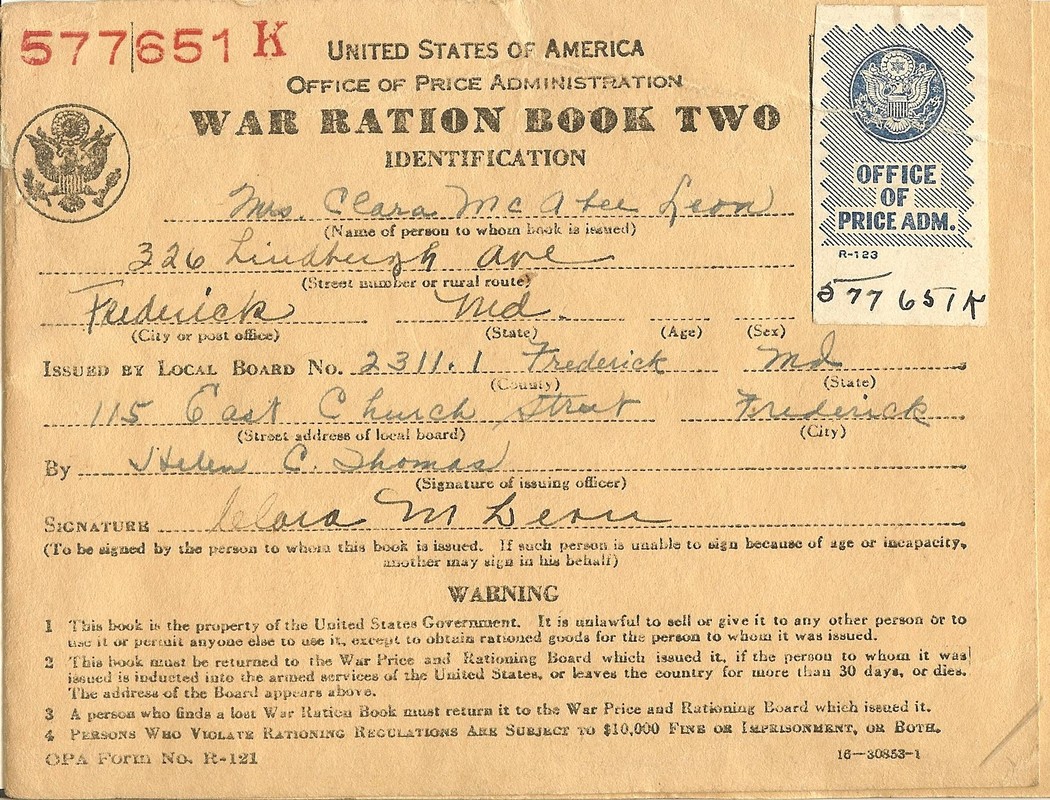



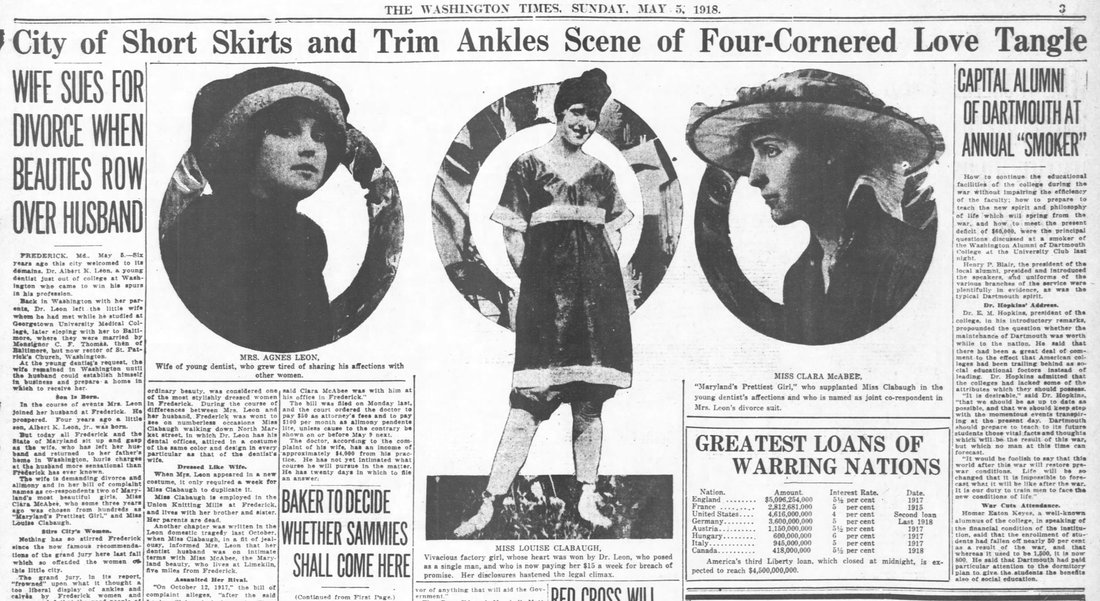


 RSS Feed
RSS Feed